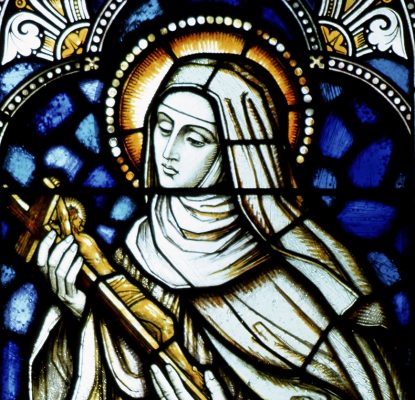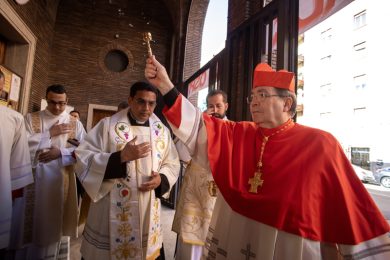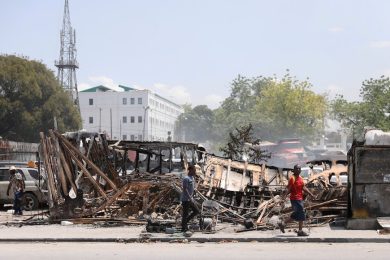Playing in the rolling hills of Umbria in Italy, young Margherita Lotti could not help being inspired by the natural beauty of the land. Even more, the roots of holiness in her surroundings reached far deeper than the richly-forested hills could tower above her.

Just a few miles northeast was Norcia, where Benedict and Scholastica were born. Due west was Spoleto, where several martyrs had borne witness to Christ even to death over a thousand years before. Several days’ walk to the northwest was Assisi, where Francis and Clare rekindled the love of poverty in imitation of the divine and humble Jesus. And further southwest lay Rome, where the graves of Peter and Paul drew thousands to the Eternal City.
Margherita was the only child of Antonio and Amata Lotti, approaching middle age, and she was precious to them — reflected in her name, meaning “pearl” in the Umbrian dialect — and they were precious to her. From them she learned faith, calm and the importance of Jesus’ words in the Beatitudes: “Blessed are the peacemakers, for they will be called children of God.” She was also inspired by the local Augustinian nuns and resolved to give her life to God in their company.
Serene as her life may seem, it was a time of great unrest. Into her teens and 20s, there were two — and at times, three — claimants to be pope. The Black Death that had decimated Europe was only some 30 years before, in her parents’ time, and its economic and social effects were still extensive. Amid the enthusiasm and vitality of the emerging Italian Renaissance in art and culture, competition for scarce resources led to rivalries, crime and shifting alliances. Italian politics — divided between the Ghibellines in support of the emperor and the Guelphs who aligned with the pope — still led to bitter divisions and frequent violence.

Margherita’s desire to join the sisters was negated by Antonio and Amata, who felt marriage would give a more stable future for their only daughter. In accord with the times, marriage was arranged for her with Paolo, and at 14, she began a life of service to both her aging parents and her husband.
Paolo’s personality was harsh, fiery, masterful — the kind of man who could make both strong friends and stronger enemies. Over difficult years, Margherita’s gentle soul gradually softened his own and with their two sons, Giangiacomo and Paolo — perhaps twins — a calmer household emerged.
After 18 years, Paolo was murdered by Guido Chiqui, likely due to the prevailing political rivalry. In her sorrow, Margherita found solace in an unlikely source: forgiveness. If she allowed anger and bitterness to take root, it could not change the past but only make the future worse. She knew well Jesus’ words: “Blessed are the merciful, for they will be shown mercy”; “ … as we forgive those who trespass against us”; “Not seven times but seventy-seven times.” For Margherita, forgiveness was the pearl of great price.
Grounded precisely in her love for Paolo and her deep faith in the Resurrection, she gained peace and purpose by refusing to give refuge to anger and bitterness. She publicly forgave Guido at Paolo’s funeral.
[perfectpullquote align=”right” bordertop=”false” cite=”” link=”” color=”” class=”” size=”14″]In her sorrow, Margherita found solace in an unlikely source: forgiveness. If she allowed anger and bitterness to take root, it could not change the past but only make the future worse. She knew well Jesus’ words: “Blessed are the merciful, for they will be shown mercy”; “… as we forgive those who trespass against us”; “not seven times but seventy-seven times.” For Margherita, forgiveness was the pearl of great price.[/perfectpullquote]However, Paolo’s family vowed revenge on the Chiquis, and their toxic rage poisoned her teenaged sons’ souls. Despite Margherita’s pleading, they plotted their vendetta to avenge their father. Failing to persuade them, she turned to prayer that they would not follow this murderous path. Both were stricken with severe illness, and she knew the supreme sorrow of burying her sons alongside their father. God had answered her prayer, but at such a cost.
There is much more of both sorrow and grace to her story, but by now you may recognize Margherita Lotti by her shortened and more familiar name: St. Rita of Cascia. We observed her feast on May 22, during Mother Mary’s month, amid today’s bitter political and social divisions, violence, crime, a pandemic and its emerging aftermath, and all the unrest of a troubled age.
St. Rita would recognize well the toxic anger that threatens to poison so many spirits with a desire to avenge, to fight, to see others as adversaries unworthy of common courtesy and human respect. Like Giangiacomo and Paolo, we can feel not simply justified but even somehow virtuous in choosing hatred and contempt. Such thinking is the work of the Father of Lies, and we cannot heal as individuals or as communities while darkness is allowed control.
Forgive. If it sounds too easy, or too impossible, or too ineffectual for the complex needs of today’s world, perhaps St. Rita would simply remind us of the words of her Lord and ours: “Come to Me, and I will give you rest.” No one can do it for another; it is the work of each one.
Forgiveness will not resolve all our social tensions, but it can prevent our adding to them. It does not condone past wrongs, and it comes with some personal cost. But what St. Rita learned at the foot of the Cross remains true: forgiveness is a pearl of great price. It refuses the poison and trusts in grace. Forgiveness will not change the past, but it does free us for a future full of hope.
Father Tom Knoblach is pastor of Sacred Heart in Sauk Rapids and Annunciation in Mayhew Lake. He also serves as consultant for health care ethics for the Diocese of St. Cloud.





















